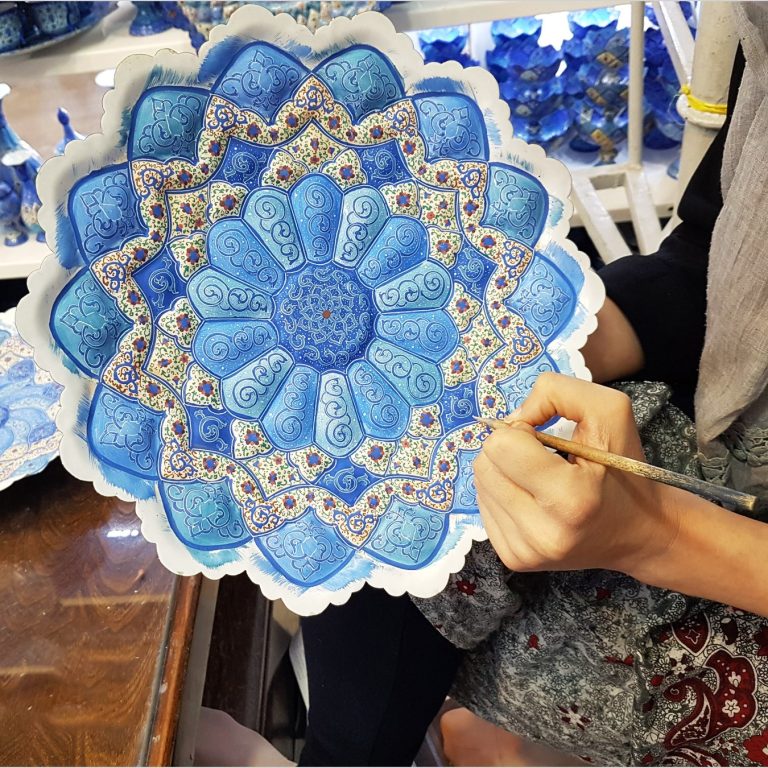Minakari: The Ancient Art of Enameling in Persia
Minakari, or enameling, is a traditional Persian art form that involves decorating metal surfaces with vibrant and intricate designs using colored enamel. Originating in ancient Persia, Minakari has a rich history and is renowned for its exquisite craftsmanship, brilliant colors, and intricate patterns.
History and Origins:
The art of Minakari dates back to over 2,500 years ago in Persia, where skilled artisans developed techniques to create stunning enamel work on metal objects. The word ‘Minakari’ is derived from the Persian word ‘Minoo,’ meaning ‘heavenly’ or ‘azure,’ reflecting the celestial beauty of this art form. Over the centuries, Minakari has evolved and flourished, becoming a symbol of Persian artistic heritage and cultural identity.
Techniques and Process:
Minakari involves a meticulous process of fusing powdered glass onto metal surfaces, such as copper, silver, or gold, through a series of firings in a kiln. Artisans meticulously apply different colored enamels to create intricate designs, often inspired by nature, geometric patterns, and Persian motifs. The repeated firing and cooling process results in vibrant colors and a glossy finish that enhances the beauty of the artwork.
Symbolism and Design:
The designs in Minakari are not only visually stunning but also hold symbolic meanings. Floral motifs symbolize beauty, growth, and nature, while geometric patterns represent unity, harmony, and eternity. Persian motifs, such as the paisley pattern (boteh jegheh), are commonly featured in Minakari, reflecting the rich cultural heritage of Persia and its artistic traditions.
Varieties and Applications:
Minakari comes in various styles, including ‘Minakari on metal’ (metallic enameling) and ‘Minakari on tile’ (ceramic enameling). Metallic enameling is often used to decorate jewelry, vases, plates, and decorative objects, while ceramic enameling adorns tiles, pottery, and architectural elements. Minakari’s versatility allows it to be incorporated into both traditional and contemporary designs, blending ancient techniques with modern aesthetics.
Preservation and Revival:
Despite the challenges of modernization and changing consumer preferences, efforts are being made to preserve and revive the art of Minakari. Artisans, cultural organizations, and government initiatives are working together to safeguard this cultural heritage, promote awareness about Minakari, and ensure its continuation for future generations. Workshops, exhibitions, and educational programs are helping to revive interest in this ancient art form and showcase its timeless beauty.
Conclusion:
Minakari stands as a testament to the skill, creativity, and cultural richness of Persian craftsmanship. Through its vibrant colors, intricate designs, and symbolic motifs, Minakari continues to captivate art enthusiasts and collectors worldwide. As a cherished art form with a storied history, Minakari represents the enduring legacy of Persian art and the timeless beauty of traditional enameling.

